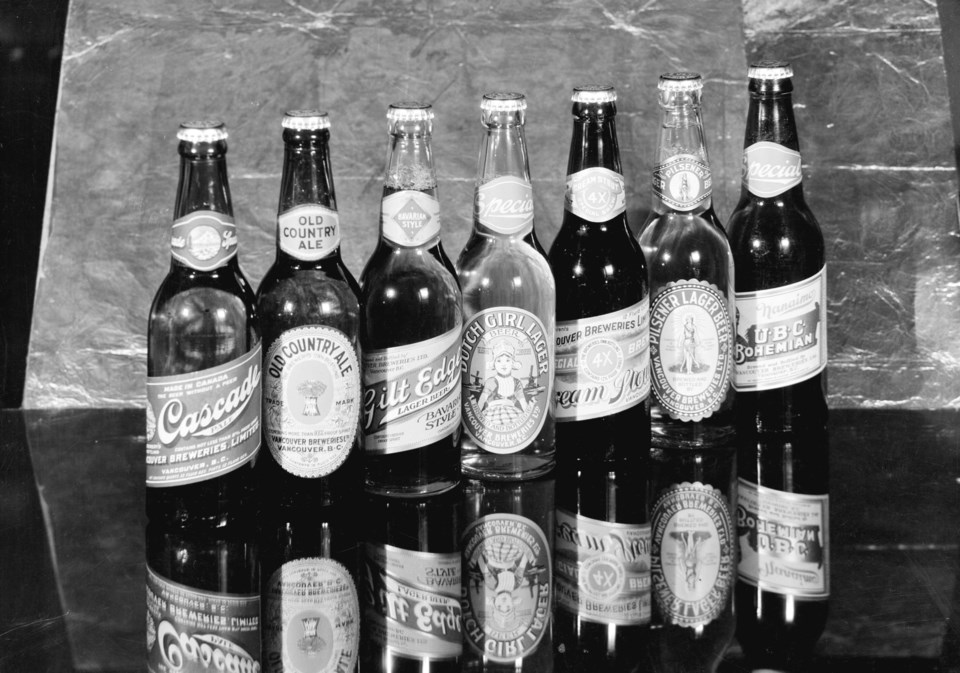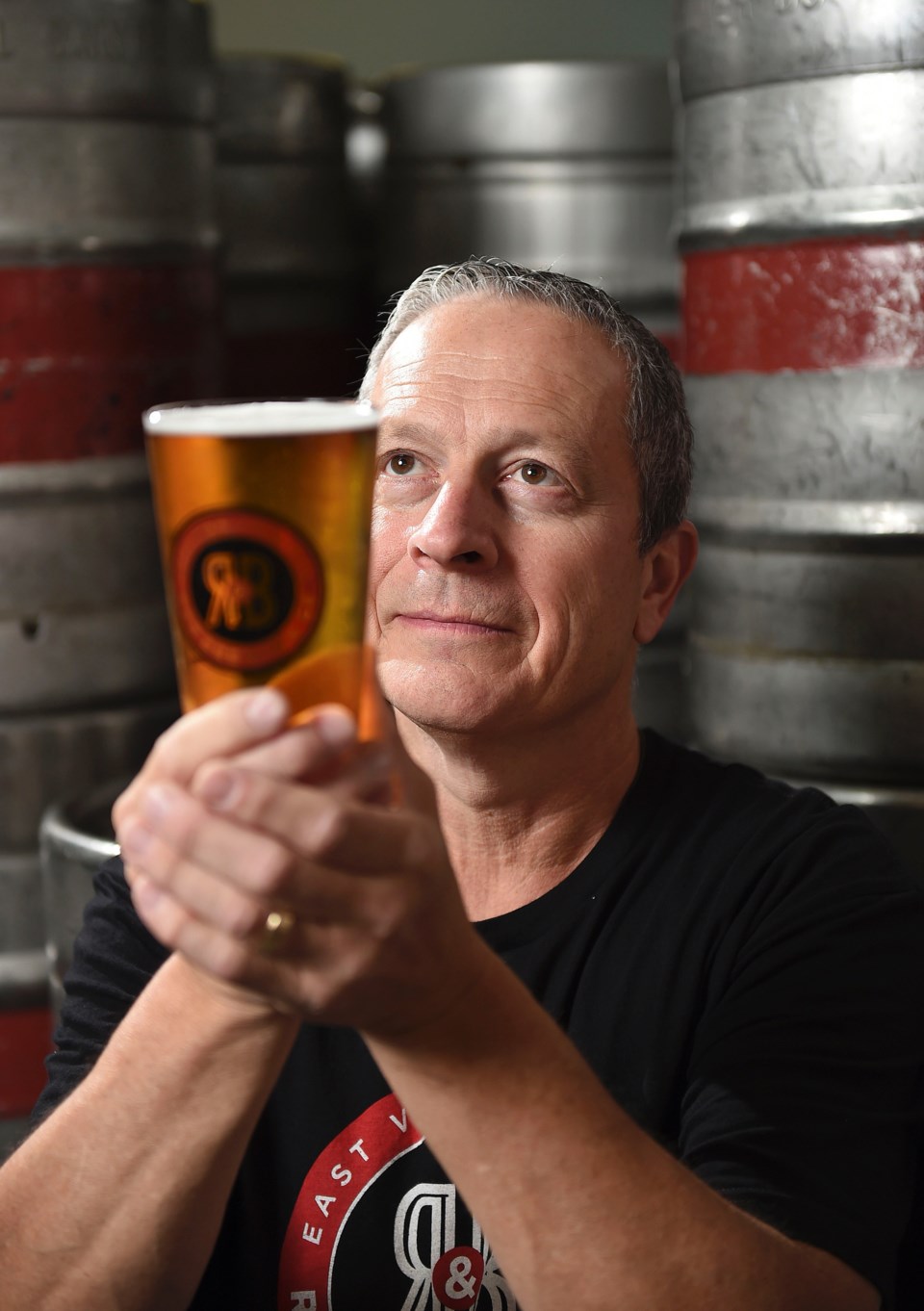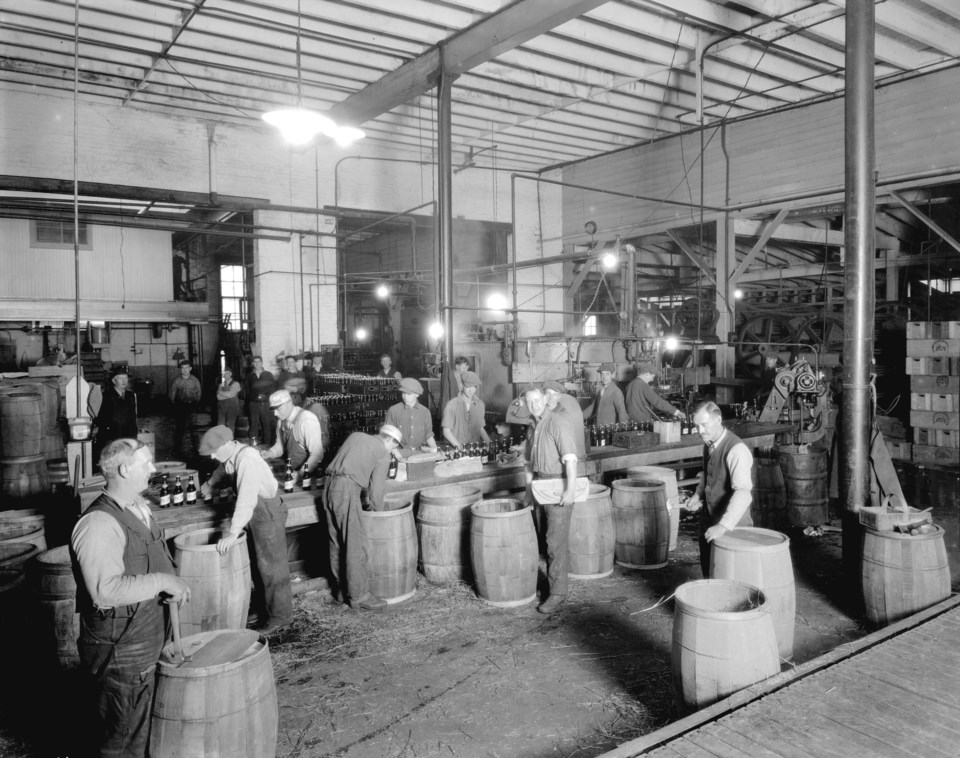Then clouds will vanish, life seems brighter,
The sorrows gone, the burdens lighter,
And Albion's sons and Deutschlandâs Kaiser
Their quarrel cease
And live in peace
For Lager Beer has made them wiser.
Ìý
- Â鶹´«Ã½Ó³»Breweries Advertisement, 1896
Ìý
It started with a roar
Long before it evolved into the beer geek mecca it has become today â a neighbourhood which hosts many of the city's finest , including Main Street, Brassneck, and 33 Acres â Brewery Creek was the heart of turn-of-the-century Vancouver's vibrant local brewing scene, a name given both to the district, and the river which gave it life.
Carving a swath through Mount Pleasant, the original creek was just one of the many freshwater streams flowing downhill to False Creek, following an indirect route one block east of Main, and beginning in a boggy area known as The Tea Swamp (near 15th and Sophia today). For more than 10,000 years, it served as a gathering place for local First Nations people, its waters sustaining the largest trout and salmon populations in the region, its shores teeming with migratory birds and plant life.
With the arrival of European settlers, the creek (as yet unnamed) became one of the regionâs most important water supplies; by the 1860s, its waters were being transported more than two miles by flume to supply Stamp's Sawmill, Vancouver's first (and at that time, only) industry. Naturally, an abundance of freshwater was attractive to early industry, and consequently, as settlers expanded outward, the area provided a perfect staging ground for new ventures, resulting in the creation of the city's first suburb: Mount Pleasant.
âThis was our special preserve, our forest retreat, our playground, and my own personal conception of a fairyland on earth,â wrote early resident Gladys Schweisinger, in a 1960 pamphlet for the Â鶹´«Ã½Ó³»Archives. âWe waded in the stream of the brook, and climbed back and forth over the many logs which had conveniently fallen across its deeper pools, joining rock to rock, and affording walkable bridges. We met our young friends in the Ravine. We played house there. We made up stories and told them to one another. We exchanged confidences, and we dreamed dreams of the future.â
Before 1880, Mount Pleasant was mostly untamed wilderness. But, by the end of the decade, as Vancouver's population exploded, the banks of Brewery Creek were suddenly packed with all manner of businesses â including a tannery, slaughterhouses, and eventually, multiple breweries â and its roar slowed to a trickle as industry dammed every inch of its length.
The Â鶹´«Ã½Ó³»Brewery opened its doors in 1888, at the corner of 7th and Scotia. The brainchild of German-born saloon owner Charles Doering, it was only the second brewing operation in town (J.A. Rekab's City Brewery had opened the year before) and it immediately garnered glowing reviews.
â[It is] a most substantial brewery,â gushed the 1888 City Directory, âin fact, the largest on the Pacific Coast, replete with machinery furnished by the Albion Ironworks, capable of brewing over 1,500 gallons a day. The cellars contain seven large vats holding 480 gallons each, an elevator and all of the latest improvements required to carry on an extensive trade.â
Doering was among the first to build a dam on Brewery Creek, harnessing its power to drive a 40-foot water wheel to mill his grain. And before the year was out, other operations sprung up along its banks, including the Lion, the Stadler, and Henry Reifel's San Francisco Brewery. By the early 1890s there were four independent brewers operating in the area. In spite of this newfound competition, Vancouvery Brewery remained the region's most popular operation. In 1892, Doering entered into a partnership with brewmaster Otto Marstrand to create a number of exciting new products, among them Cascade Ale (âThe Beer Without Peerâ, from which todayâs Cascade Room takes its name), and Alexandra Ale, which they launched to great fanfare in the summer of 1892.
âAlexandra Beer will no doubt be the popular beverage this summer,â wrote the Â鶹´«Ã½Ó³»Daily World, âand the handsome delivery wagon, built for this firm by the Columbia Carriage Works, will be kept busy. There will be no excuse hereafter for sending thousands of dollars out of this province yearly for lager when equally as good an article can be produced at home.â
The early 1890s were the boom years for Mount Pleasant's breweries. Some (including Reifelâs first venture) failed, while Doering went on to achieve substantial success â locally, provincially, and internationally. By this time, Mount Pleasant was a bustling suburb, and Doering was a rich man. In fact, demand was so extreme, Â鶹´«Ã½Ó³»Brewery had to expand several times, finally purchasing the Thorpe & Co Soda Works next door, and opening a brand-new operation in early 1903.

Brewery Creek goes flat
However, by the turn of the century, tides were turning. Of the independent breweries that had opened during the 1890s, only four remained; the rest had closed, been acquired, or, had more than likely amalgamated with one of the other local companies. Amalgamation was seen as a savvy move by businessmen of the early 20th century, allowing them to centralize operations, cut costs, and corner the market. Doering's brewery, for example, merged with Red Cross (the renamed City Brewery), and following a series of further amalgamations in the early 1910s, became part of a provincial consortium that controlled approximately 95 per cent of the local supply.
However good these mergers may have been for business, they signalled the end of commercial brewing in Brewery Creek; by 1922, only Â鶹´«Ã½Ó³»Breweries remained â as a consortium comprising a handful of other brewers and (briefly) distillers â but had moved their facilities out of the region. And virtually overnight, Brewery Creek vanished from the public discussion. Part of this was due to the fact that the creek itself had disappeared from view, its roar buried forever beneath pounds of dirt and asphalt, as part of an early-1920s False Creek reclamation scheme which drastically changed the face of the city. Part of it was due to the onset of Prohibition; in the wake of a federal ban on alcohol, many breweries shut their doors. Others, like the Reifels, .
âThough it is now underground, Brewery Creek is still alive,â archivist J.S. Mathews noted, without irony, in the 1930s, âyou can hear it at the manhole beside 31st Avenue.â

Alive and brewing
By the 1980s, Mount Pleasant had gone into decline. Named as one of cityâs âneglected neighbourhoodsâ in a 1984 article in the EastEnder, it was considered an inner-city area by residents, one rife with prostitution, homelessness, and drug abuse.
âIt was way heavier industrial back then,â recalls Barry Benson, who co-founded R+B Brewing in the neighbourhood in 1997. âVery dirty. There were needles in the back alleys, there were Ladies of the Night on the street, there were grow-ops all around. It was sketchy. People were walking in and stealing our stuff. One day, we were sitting in the coffee shop next door, and we saw some guy walking down the street with a computer in his hand. And it turned out, it was our computer.â
Undeterred, Benson and partner Rick Dellow went on to brew the neighbourhoodâs first commercial batch of beer in more than 70 years, and their 4th Avenue facility remained Mount Pleasantâs only craft brewery for the better part of two decades. It was a modest, two-man operation, one of only a handful of local breweries, including Storm, Russell, and Granville Island. Back then, Vancouverâs Craft Beer Scene was still in its infancy, and, as Benson recalls, the drinking habits of 1990s Â鶹´«Ã½Ó³»were vastly different than those of today.
âThe market was really tough,â he recalls. âPeople had 10 taps, and they were all Molson, and Molson is paving their parking lots and giving them hockey tickets, and theyâre saying: âWhy would I try anything else? Nobody wants to drink craft beer. Youâre way too expensive and you have too much flavour.â It was a really tough haul getting your beer in anywhere.â
Today, local brewers command roughly 20 per cent of the provincial beer market. The Brewery Creek neighbourhood has gone through a series of revitalizations, starting in the early â90s with the creation of the Brewery Creek Historical Society. In 1986, the park at 15th and Sophia was officially named Tea Swamp Park. In 1993, the cityâs first live/work artist space opened in the Â鶹´«Ã½Ó³»Breweries building at 6th and Scotia. In 1996, council provided incentives for developers to commemorate the now-lost water body, in exchange for relaxed building restrictions. And now, after almost 100 years, the Brewery Creek district itself is roaring back to life once more, providing a new generation of thirsty Vancouverites with the chance to enjoy locally-made beer from seven different neighbourhood operations, each with their own distinct style.
Even Â鶹´«Ã½Ó³»Breweries is . Its former garage has been fully restored and now serves as the headquarters for the Main Street Brewing Company. Itâs a place which would no doubt make Doering, Reifel, and Marstrand proud, a place where, in the words of the 1892 Â鶹´«Ã½Ó³»World, âmen seemed never to tire in the arduous but enjoyable work of drawing beer without stint â and fine, creamy-topped, clear-bottomed beer it was.â
⢠With files from Bruce MacDonald



